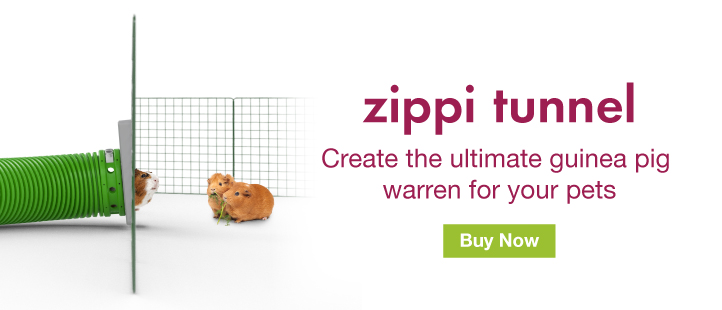Guinea pigs can be quite frightened and anxious when it comes to change. Some may have a nervous temperament that means it’s a little tricky for introductions, be it to new environments or to new hutch-mates. However, if you take an introduction slowly enough then it’s likely to go well in the end. Here we’ve listed some tips and tricks that will give you a good chance of your introductions going well.
- Be 100% sure of the gender of all guinea pigs that you’re introducing
If you’re not absolutely sure, then it’s worth a quick trip to the vet, as although some pet providers are better at sexing than others. Genders are sometimes incorrectly assigned. It’s important to be fully aware of which gender which guinea pigs are, and not just to make sure that you’re not overrun with babies. Any female guinea pig that gets pregnant for the first time when she’s over a year old is at risk of having real problems when she’s attempting to deliver her litter, as she’s at an age where her hip bones will have fused. - Make separate, temporary enclosures
If you’re introducing new guinea pigs to your existing ones then you’ll need to keep them in separate enclosures for the first few weeks. This serves as an quarantine period - guinea pigs introduced to your current pets will need to be kept away for a while in case they’d picked up anything where they were previously being housed. After this period, if they look well and are acting as you would expect, then you’re probably safe to gradually introduce them to your other pets. - Create neutral, unmarked territory for introductions When the time finally comes to introduce your new guinea pigs to your existing ones, make sure that you’ve got a good neutral ground for them to meet on. It sounds a little silly but guinea pigs can be quite territorial, and if they sense invaders on their patch then they could take a dislike to them.
- Get rid of their smells
Give all your guinea pigs a bath (with special guinea pig shampoo) so that they don’t smell very strongly of one group or another, and wash all of your existing guinea pig equipment to minimise scent markings.

Ridding guinea pigs of their scents can help introductions run more smoothly
- Monitor progress
Watch them carefully to see whether or not they’re getting along. Have a small towel at the ready to drop over them, as if they’re fighting they can lash out at both one another and you. It can be quite difficult to judge when to step in, but you’ll need to be ready in case a fight does break out. Some of the warning signs are the hairs on the guinea pigs’ backs standing on end, yawning to display teeth, and teeth chattering. A very gentle nip shouldn’t harm the other guinea pig, but if the nip looks aggressive and the guinea pig being nipped cries out, then it’s time to separate them. - Mesh partition If, after several unsuccessful attempts at introducing on a neutral ground you have two guinea pigs who really don’t like each other – don’t despair. An easy thing to do is put a wire mesh down between your guinea pigs’ spaces. This way, they can talk to each other without one getting shirty with the other, but they still count as companions. You can try to remove the partition once they’re more used to one another. This trick also works in two other circumstances: if you have a male and a female guinea pig that you want to live together but you don’t want them to go through the stress of getting neutered, or if a guinea pig is continually harassing and bullying another. Signs of guinea pig harassment are frequent nipping, or the dominant preventing the less dominant guinea pig from accessing food. If this only happens once in a while, this behaviour is natural but if it happens regularly then it’s very stressful for the bullied guinea pig, and it would be wise to separate them with the mesh trick. Try removing the mesh in a few days and monitor carefully to see if their relationship has improved.

Some guinea pigs needs some time to get used to one another
Even if none of the warning signs are there, you’ll need to watch your guinea pigs for several hours to make sure no aggressive behaviour is occurring. To try and prevent fights, try rubbing your new guinea pigs with hay and bedding from the main guinea pig cage, and put some fun and interesting toys and treats in the neutral area to keep them amused.

Guinea pigs that have just been introduced need to be monitored carefully
Most of the time, guinea pig introductions will go well and after a few hours in the neutral zone it's likely that your guinea pigs will be getting along well. Keep distracting them with treats and toys. After a few hours it may be ok to reintroduce your new enlarged herd to their normal enclosure. For the first few days it might be a good idea to have multiple sleeping and eating areas to prevent them from getting too stressed out and invaded, but as long as you carefully monitor them then things are likely progress smoothly and you’ll have a nicely settled group.






Comments
Kasmira, 17 April 2020
I had two guinea pig one passed so I was looking to get a skinny pig but u wasn’t sure if the one I had is going to like the new one
Reagan, 7 December 2019
I've had my guinea pig, Mary Jane, for about 2 years now and have been wanting to get her a friend since I got her and am finally able to get her one. Is it safe to introduce another guinea to her even though shes been alone for so long?